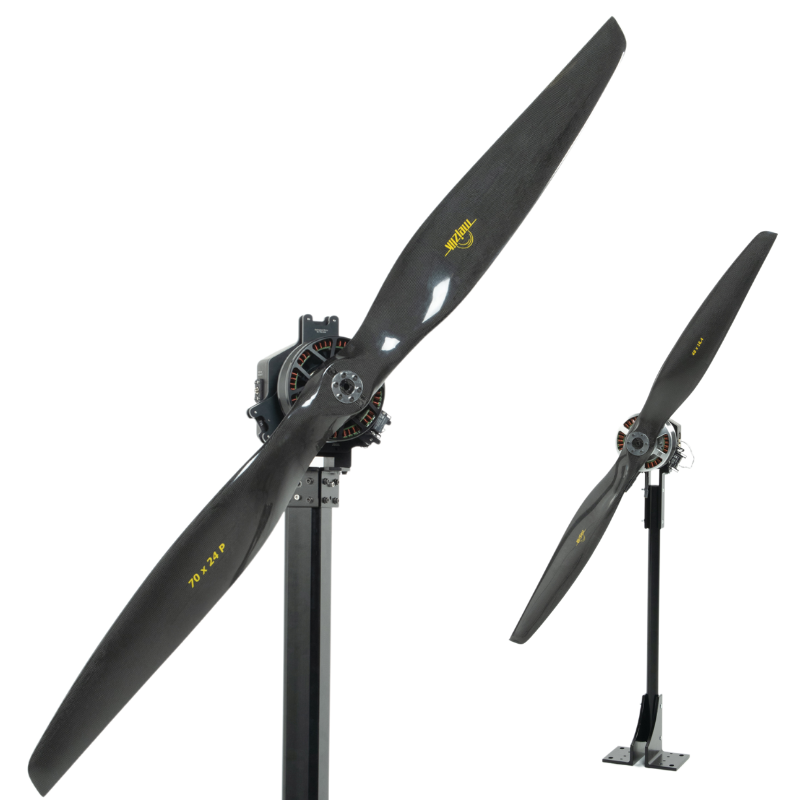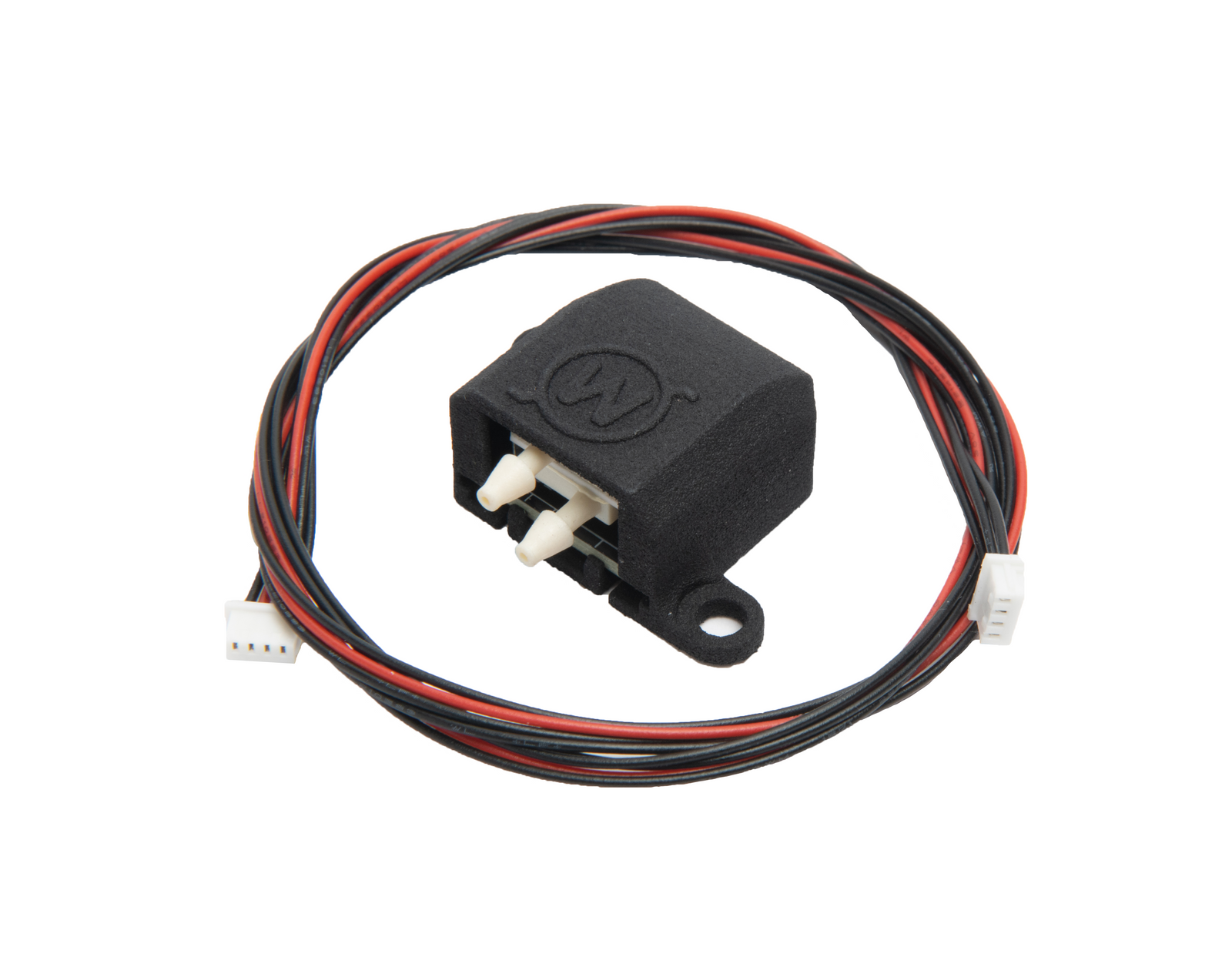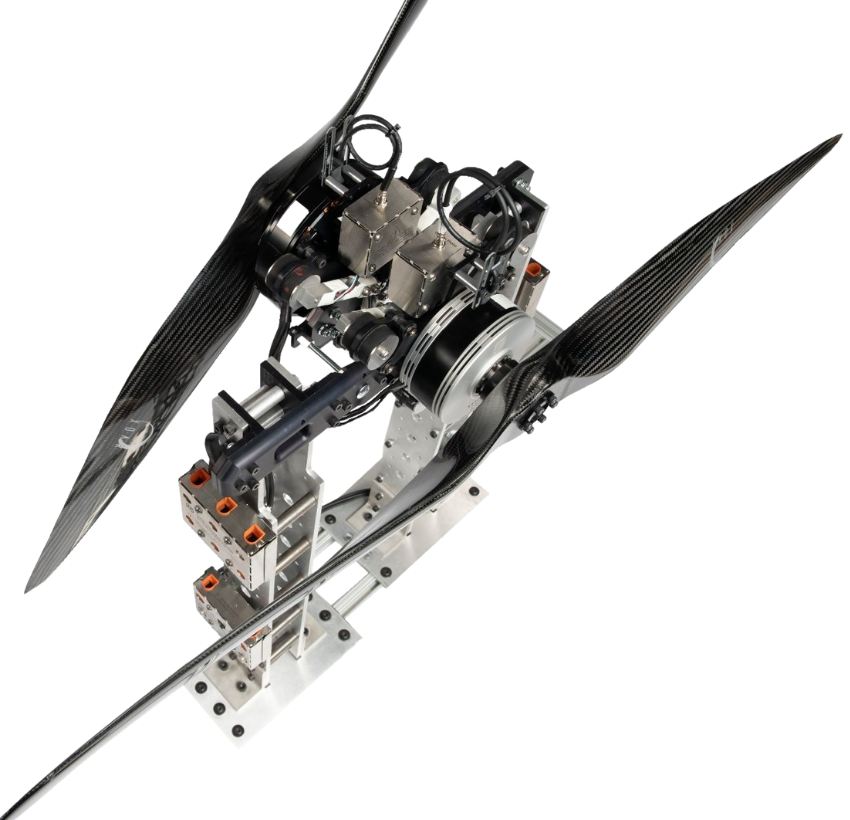Why Measure Motor, Battery and ESC Temperature?
High temperatures can damage magnet wires, bearing, electronics and composite material. Many electronic components will still work at high temperature, but their life will be very significantly degraded and could fail in flight.
Measuring temperature allows designers to identify problems and establish guidelines for operation. A vehicle might have a maximum operating temperature for example. Another possible guideline is the cooldown time necessary when swapping batteries.
How to Measure Temperature with a Temperature Sensor
There are two main types of temperature sensors / probes frequently used: IR probes, and contact based probes. Our Flight Stands use contact based probes using the PT100 electrical standard.
It is important to understand that heat travels through a gradient of temperature. For example, look at the two diagrams of an ESC and a temperature probe below.


The image corresponds to the second diagram, which has a poor measurement quality.
The temperature probe will not measure exactly the FET's temperature due to the isolation around the electronics. What is important to learn from this diagram is that positioning of the temperature probe is important when doing a temperature measurement. In addition, it is important to have a good contact between the temperature probe and the electronics. A good contact can be achieved using thermal paste or thermal epoxy. The compound will transfer heat much better than air, so you will have a better measurement. The other important factor in measurement is to be consistent in the positioning of your temperature sensors. This will allow for useful test comparison during analysis.
Here is an example of a sensor installed in the motor. The rotor was removed for clarity:
Each geometry is different, but you will generally want to measure the coil temperature on a motor. Magnet wire comes with various insulation that can withstand between 105 Celsius and 260 Celsius.
The air temperature should also be measured during a test as all the other measurements will be relative to the air temperature. For example, if your motor heats up to 80°C at 20°C air temperature, it will heat up to 100°C at 40°C air temperature.



 Back to Blog
Back to Blog


